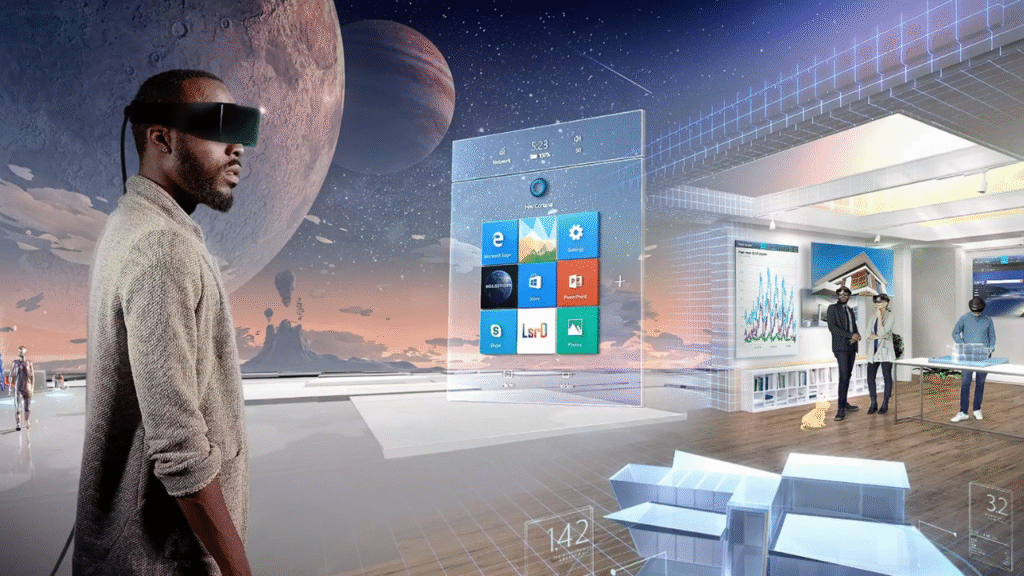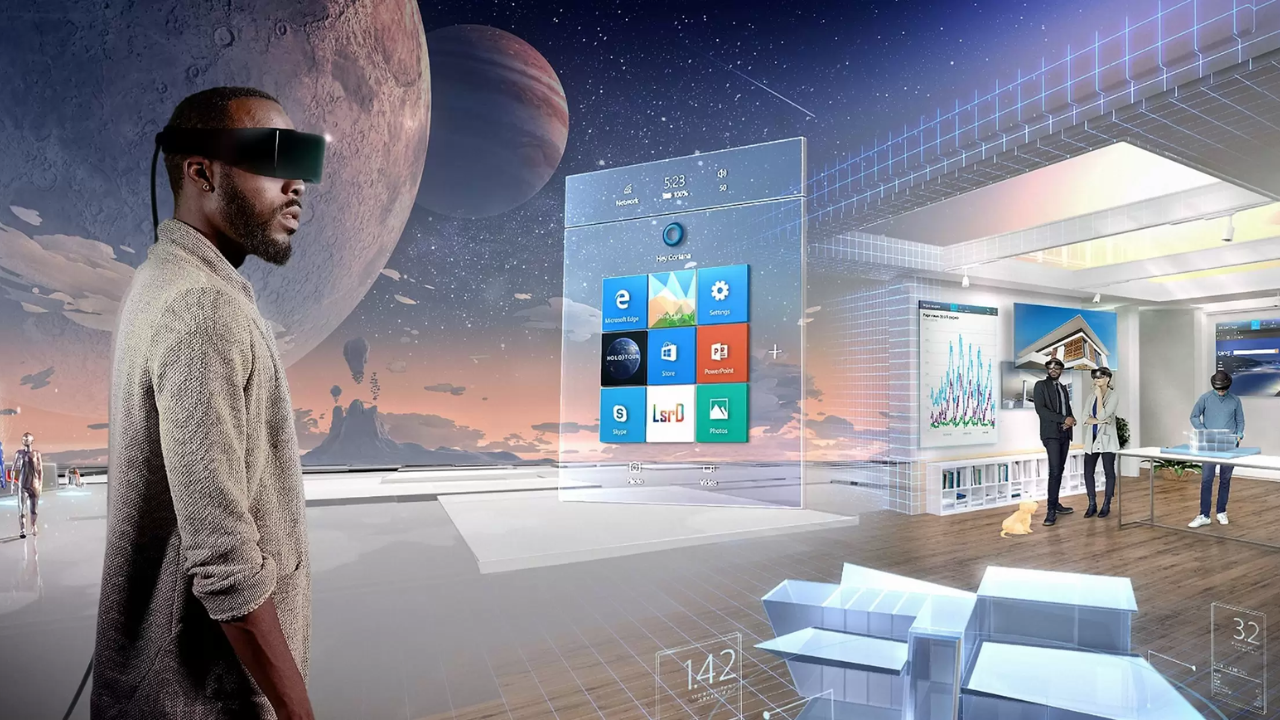
The traditional classroom is undergoing a technological transformation, and at the forefront of this change are holograms and mixed reality (MR). Once limited to science fiction and high-budget entertainment, these immersive technologies are now being applied in real-world educational settings. From virtual dissections to historical recreations, holograms and MR are creating engaging, interactive, and personalized learning experiences like never before.
What Are Holograms and Mixed Reality?
Holograms are three-dimensional visual representations that can be viewed without special glasses, often projected into a physical space.
Mixed Reality (MR) merges the physical and digital worlds using advanced headsets (like Microsoft HoloLens or Magic Leap), allowing students to interact with virtual objects anchored in the real environment.
Unlike simple virtual reality (VR), MR doesn’t replace reality but enhances it — making it ideal for educational applications that require hands-on interaction and contextual learning.
How These Technologies Enhance Learning
1. Immersive Engagement
Instead of passive reading or viewing, students can now walk around a 3D model of the solar system or interact with a historical battlefield. This engagement increases knowledge retention and curiosity.
2. Visualizing Complex Concepts
Abstract subjects like molecular biology, anatomy, or astrophysics become easier to understand when visualized in 3D space. For example, instead of reading about DNA, students can manipulate its structure virtually.
3. Global Learning Without Boundaries
With holograms, teachers or guest lecturers can appear in classrooms remotely in real-time. Students from rural or remote areas can experience the same lessons as those in urban schools.
4. Safer Learning Environments
Mixed reality simulations allow for risk-free practice in dangerous fields — like chemistry experiments, surgical procedures, or mechanical repairs — without the need for real-life exposure.
5. Personalized and Adaptive Learning
MR can assess how a student interacts with the content and adapt in real time, offering customized learning paths or repeating misunderstood concepts with different visual models.
Real-World Applications in the Classroom
| Use Case | Description | Benefit |
|---|---|---|
| Virtual Science Labs | Simulate experiments without lab equipment | Cost-effective, risk-free learning |
| Anatomy Classes | Explore human organs in 3D | Greater comprehension of body systems |
| Historical Reenactments | Experience key historical events in real time | Deeper emotional and visual learning |
| Engineering Simulations | Build and test designs in mixed reality | Encourages problem-solving |
| Language and Culture Training | Holographic tours of foreign countries | Immersive language and cultural exposure |
Key Benefits of Holograms and MR in Education
1. Accessibility
Students with disabilities or remote learners gain access to educational content that was once limited to physical spaces.
2. Enhanced Collaboration
Students and teachers in different locations can collaborate in the same mixed reality space, making group projects more interactive and inclusive.
3. Cost Savings Over Time
While initial setup can be expensive, MR reduces the need for costly lab equipment, physical models, and field trips.
4. Real-Time Feedback and Assessment
Educators can track engagement and provide immediate feedback based on student interaction within the MR environment.
5. Future-Ready Skills
Students become proficient with emerging technologies, preparing them for careers in STEM, design, healthcare, and other tech-driven industries.
Challenges in Implementation
Despite its promise, integrating holograms and MR into mainstream education faces several obstacles:
1. High Initial Costs
Advanced headsets and projection systems are expensive. This poses a challenge for public schools or institutions in developing countries.
2. Technical Limitations
Not all MR devices are lightweight, user-friendly, or free from glitches. Long usage can cause eye strain or discomfort.
3. Digital Divide
Schools in rural or underserved areas may lack the infrastructure (internet bandwidth, updated hardware) to support MR learning.
4. Teacher Training Needs
Educators must be trained not only in using the devices but also in redesigning curricula to make full use of the technology.
5. Content Development
Creating high-quality, curriculum-aligned MR content requires time, expertise, and collaboration between educators and developers.
Overview Table
| Aspect | Advantage | Limitation | Real-World Example |
|---|---|---|---|
| Engagement | Highly interactive and fun learning | Requires expensive hardware | 3D cell exploration in biology class |
| Accessibility | Helps disabled and remote learners | Digital divide issues | Virtual guest lectures in rural areas |
| Safety | Simulates risky environments safely | May not replace real-world experience | Virtual chemistry labs |
| Personalized Learning | Adapts to student’s pace | Needs AI integration and testing | Adaptive MR tutorials |
| Collaboration | Enables remote teamwork in shared 3D spaces | Network latency may disrupt experience | Holographic group projects |
| Cost Effectiveness (Long-Term) | Reduces need for physical resources | High upfront investment | Replacing physical anatomy models |
The Future of MR and Holograms in Education
The next few years could see widespread integration of MR in classrooms, especially as costs decrease and hardware becomes more accessible. We’re already seeing partnerships between tech companies and educational institutions to develop immersive curricula. Additionally, AI integration will soon allow mixed reality systems to deliver smarter, more responsive learning environments.
To ensure equity and access, governments and nonprofits must work hand-in-hand with the private sector. Initiatives like subsidized headsets, cloud-based MR content, and training programs for educators will be critical in unlocking the full potential of this transformative technology.
3 One-Line FAQs
Q1: Can holograms and mixed reality replace traditional teaching methods?
They enhance, not replace, traditional methods by adding immersive and interactive dimensions to learning.
Q2: Is mixed reality safe for students to use regularly?
Yes, when used in moderation and with proper ergonomic devices, MR is safe and effective for learning.
Q3: Are schools already using holograms in the classroom?
Yes, some schools and universities globally have started pilot programs integrating MR and holographic lessons.

